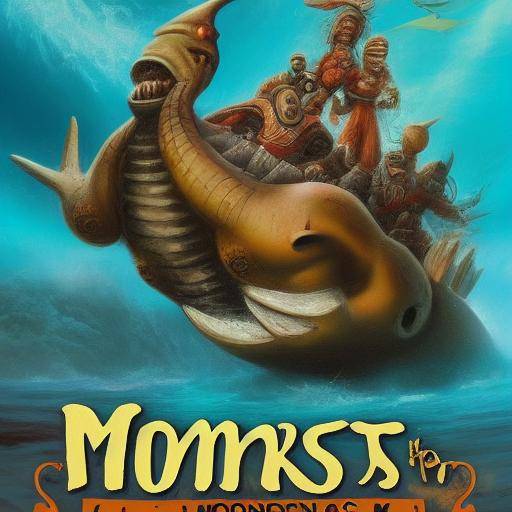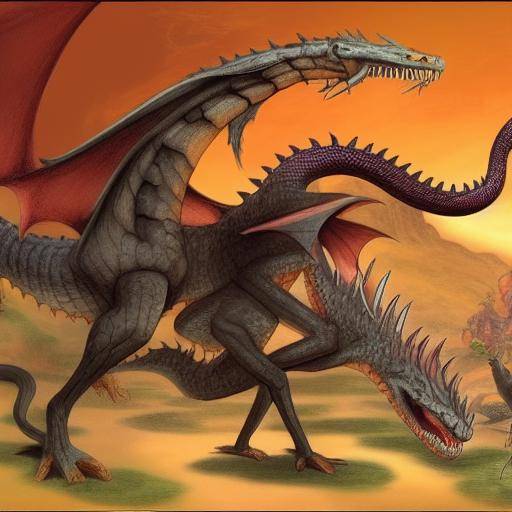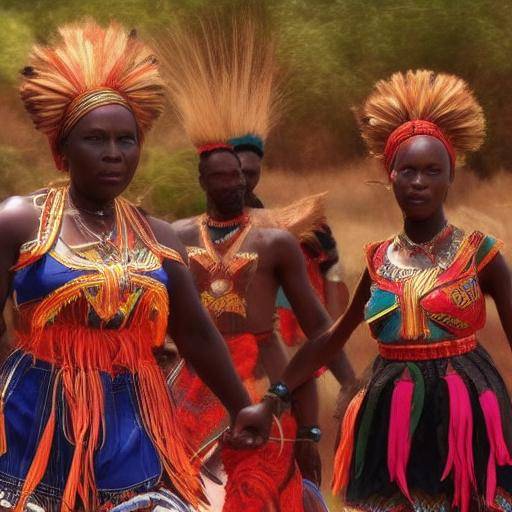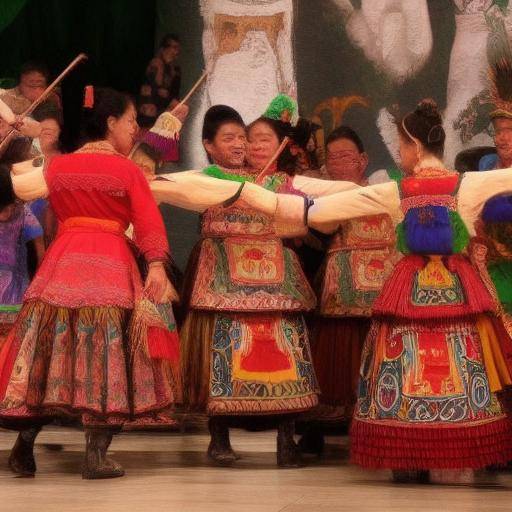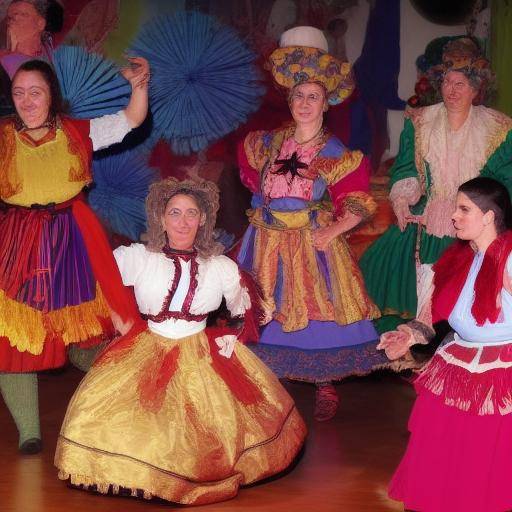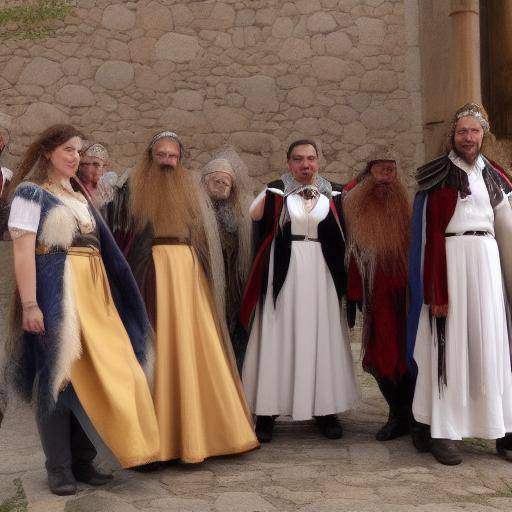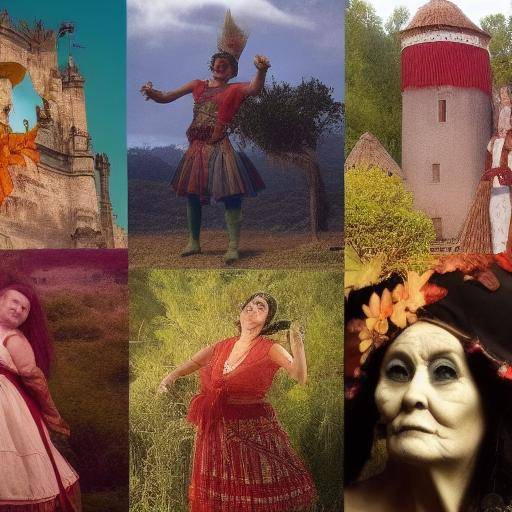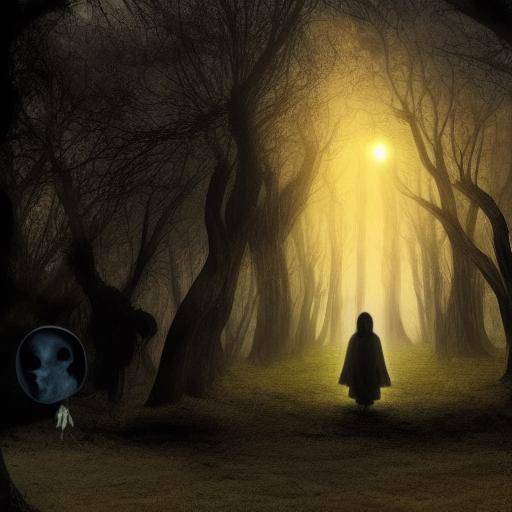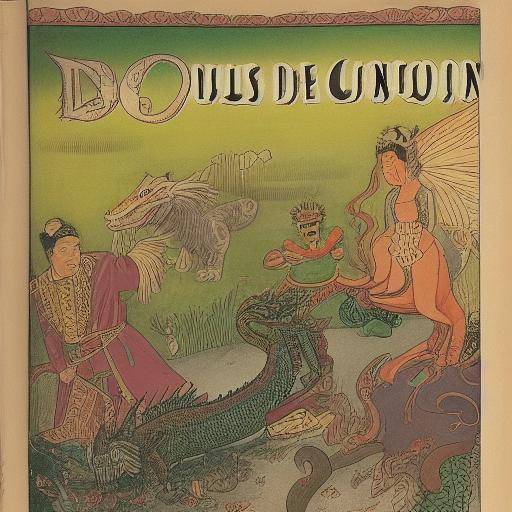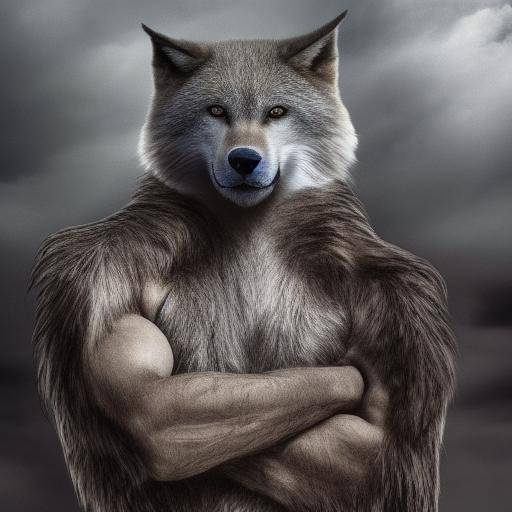
Have you ever wondered about the history and fascination behind the werewolf and his horror myths? In this article, we will thoroughly explore the phenomenon of "wolf man" and the legends that have surrounded him throughout history. From its origins in ancient cultures to its presence in contemporary culture, we will discover the evolution of this legendary figure and the influence it has had in society. Prepare to immerse yourself in the mysterious and supernatural world of the werewolf.
Introduction to the Wolf Man
The concept of the werewolf has permeated countless cultures throughout the centuries, and has been a source of fascination and fear to the same extent. This mythological being, known for its ability to transform from human to wolf, has been the subject of numerous stories, myths and legends that have endured over time. In this introductory section, we will enter the history of the werewolf, its origin and its influence on popular culture.
The werewolf, also known as "licanthropo", is a legendary figure that has appeared in the mythologies of various civilizations around the world. Commonly associated with the full moon and monstrous transformation, this being has been the subject of numerous representations in art, literature and cinema. Throughout history, the werewolf has awakened both fear and fascination in the human mind, becoming a symbol of the unknown and the wild.
History and Background of the Wolf Man
To understand the magnitude of the influence of the werewolf in popular culture, it is crucial to explore its origins and evolution over time. From the first references in Greek mythology to its representation in Gothic literature, the werewolf has left an indelible mark on collective consciousness. In this section, we will immerse ourselves in the history and background of the werewolf, drawing his trajectory from antiquity to present.
The figure of the werewolf has deep roots in the ancient mythologies, where it was associated with the worship of the gods, hunting and protecting the wild territories. In Greek mythology, the myth of "Licaon" narrates the transformation of a king into wolf as divine punishment, laying the foundations for future representations of the werewolf in Western culture.
Throughout history, the werewolf has been the subject of numerous interpretations, from medieval superstition to the modern era of cinema and literature. Their transformations have been linked to the full moon and lunar cycles, adding a mystical element to their nature. As popular culture evolved, the werewolf found its place in Gothic literature, horror films and folktales, consolidating its status as an icon of fear and darkness.
Analysis in Deepness of the Myths of Terror and Legends of the Wolf Man
The myths of terror and the legends surrounding the werewolf have endured over the centuries, generating endless interpretations and speculations around this mysterious being. Through an in-depth analysis, we will examine the most outstanding aspects of the myths and legends of the werewolf, exploring their cultural and psychological implications.
The representation of the werewolf in popular culture has been a reflection of the anxieties and fears inherent in human condition. His duality between the human and the bestial has served as a metaphor to explore topics such as the wild nature of man, the internal struggle between rationality and instinct, and physical and psychological transformation. Through Gothic literature, horror cinema and folk traditions, the horror myths of the werewolf have come to life, feeding the collective imagery around terror and the supernatural.
The notion of lycantropy, or the ability to become wolf, has been subjected to intense scrutiny in various cultures and contexts. From ancestral beliefs in ritual transformation to modern psychological interpretations, the wolf myth has been approached from multiple perspectives. The exploration of these theories offers us a broader view of myths and legends that have permeated the figure of the werewolf over time.
Exhaustive Review of Applications and Best Practices
In this section, we will focus on contemporary applications of the myths of terror and the legends of the werewolf, as well as on best practices for their interpretation and dissemination. From its influence on popular culture to its relevance in the field of entertainment and folklore, we will examine in detail practical applications and effective strategies around this fascinating theme.
The presence of the werewolf in popular culture has transcended cultural boundaries and has become an iconic element of cinema, literature and visual art. His representation in classic films such as "The Wolf Man" (1941) until his influence in contemporary literature has cemented his status as an archetype of terror and transformation. Moreover, its role in folklore and popular traditions has allowed its myths and legends to continue to captivate audiences of all ages around the world.
Comparative Analysis of the Wolf Man, the Myths of Terror and the Legends
A detailed comparison between the werewolf, the myths of terror and related legends will allow us to explore the similarities, differences and possible synergies between these fascinating themes. By identifying the points of convergence and divergence, we can appreciate the complexity and wealth of these narratives and their impact on the collective imagination.
The figure of the werewolf, often associated with monstrosity and transformation, shares parallels with other myths of terror and legends that have endured in popular culture. The exploration of these common and distinctive elements will give us a more complete view of the cultural and psychological forces that have shaped these narratives over time.
Practical Tips and Accessible Recommendations
For those interested in deepening in the myths of terror and the legends of the werewolf, we will offer practical advice and actionable recommendations. These suggestions will provide practical guidance and useful resources for those wishing to further explore this exciting subject, whether from an academic, creative or playful point of view.
- Explore the classical literature: Dive into the fundamental works that have influenced the representation of the werewolf in popular culture, such as "Dracula" by Bram Stoker and "Frankenstein" by Mary Shelley.
- Inquire in folkloric traditions: Investigate popular legends and stories about licantropy in different cultures and regions of the world, enriching your understanding of this universal phenomenon.
- Enjoy the horror cinema: Explore the filmography related to the werewolf, from classic horror cinema to modern reinterpretations, and analyze how this figure has been represented over time.
Perceptions of Industry and Expert Reviews
In order to obtain a complete vision of the myths of terror and the legends of the werewolf, we will collect opinions of experts in the field, as well as perceptions of the industry related to this topic. Through interviews and trend analysis, we will explore the current assessment and future projections related to the myths of terror and the legends of the werewolf.
Experts in the entertainment and popular culture industry will give us a unique perspective on the evolution and imprint of the myths of terror and the legends of the werewolf in modern society. Their opinions will shed light on emerging trends, evolving narratives and the lasting power of these stories in contemporary culture.
Case Studies and Practical Applications
Through detailed case studies, we will examine the practical applications of horror myths and the legends of the werewolf in different contexts and industries. These concrete examples will allow us to appreciate how these narratives have influenced fields as diverse as entertainment, psychology and artistic expression.
*The impact of the werewolf in gender cinema: We will analyze how the cinematographic representations of the werewolf have evolved over time, affecting the tendencies and styles of horror cinema and its subgeners.
*The influence of horror myths in contemporary psychology: We will explore how the myths and legends of the werewolf have been studied in modern psychology, offering revealing perspectives on human nature and the perception of fear.
*The presence of the werewolf in contemporary art: We will investigate how contemporary artists have reinterpreted and reimagined the figure of the werewolf in their works, revealing new facets and meanings of this enigmatic being.
Future Trends and Predictions
Finally, we will enter into future trends and predictions related to the myths of terror and the legends of the werewolf. Through the analysis of current data and the projections of experts, we will outline the course that these narratives could take and their impact on society and culture in the future.
Emerging tendencies in the narrative of terror and the resurgence of mythical figures such as the werewolf will give us an anticipatory view of the paths that could take these themes as to their popularity and influence. In addition, predictions based on expert opinions will give us a insightful view of the possible evolutions and adaptations of these stories in response to cultural and social changes.
Conclusion
In short, the myths of terror and the legends of the werewolf continue to exert a powerful attraction in human imagination, challenging our perceptions of fear, transformation and human nature. Through a historical, analytical and prospective journey, we have been able to explore in depth the wealth and complexity of these timeless narratives, revealing their lasting influence on culture and society.
FAQs
What is the origin of the wolf myth?
The figure of the werewolf has its roots in ancient mythologies, where it was associated with the ritual transformation and protection of the wild lands. Throughout history, its representation has evolved, through various cultures and traditions.
What elements characterize the horror myths of the werewolf?
The horror myths of the werewolf are often associated with physical transformation, full moon and duality between the human and the bestial. These elements symbolize the internal struggle and the fears inherent in human condition.
How has the werewolf influenced popular culture?
The representation of the werewolf in cinema, literature and art has generated a lasting impact on popular culture, fueling the fascination of terror, the supernatural and transformation.
What is the role of the werewolf in contemporary psychology?
The figure of the werewolf has been studied in modern psychology, providing perceptions of human duality, the perception of fear and symbolic representations in human psychism.
What are future trends related to the horror myths of the werewolf?
There is a resurgence of classic horror narratives, including the figure of the werewolf, in response to the search for new expressions of fear and supernatural. The narratives of the werewolf, along with other myths of terror, are experiencing renewed interest in contemporary culture.
How can I further explore the horror myths of the werewolf?
To deepen in the myths of wolf terror, it is recommended to read classic works of Gothic literature, explore emblematic films of horror cinema and study the interpretations of experts in mythology and folklore.
With this deep exploration of the myths of terror and the legends of the werewolf, we hope to have provided an enriching vision of this cultural phenomenon. As these narratives continue to influence the collective imagination, we still have much to discover and understand about human nature and our relationship with fear, transformation and the unknown.
Prepare to immerse yourself in a unique journey through the dark forests of mythology and terror, where the figure of the werewolf continues to lurk in the shadows of human imagination!





